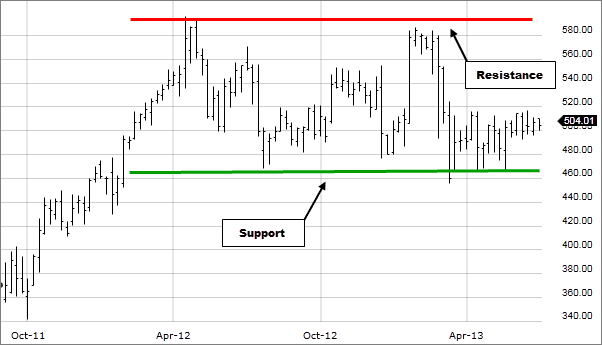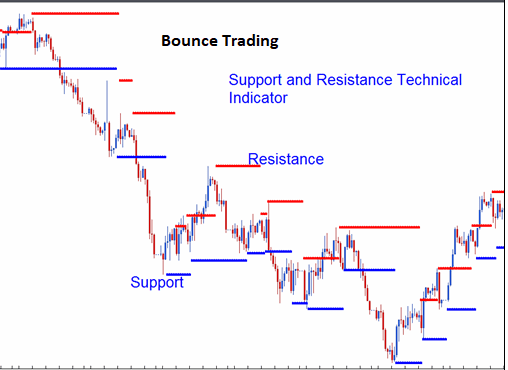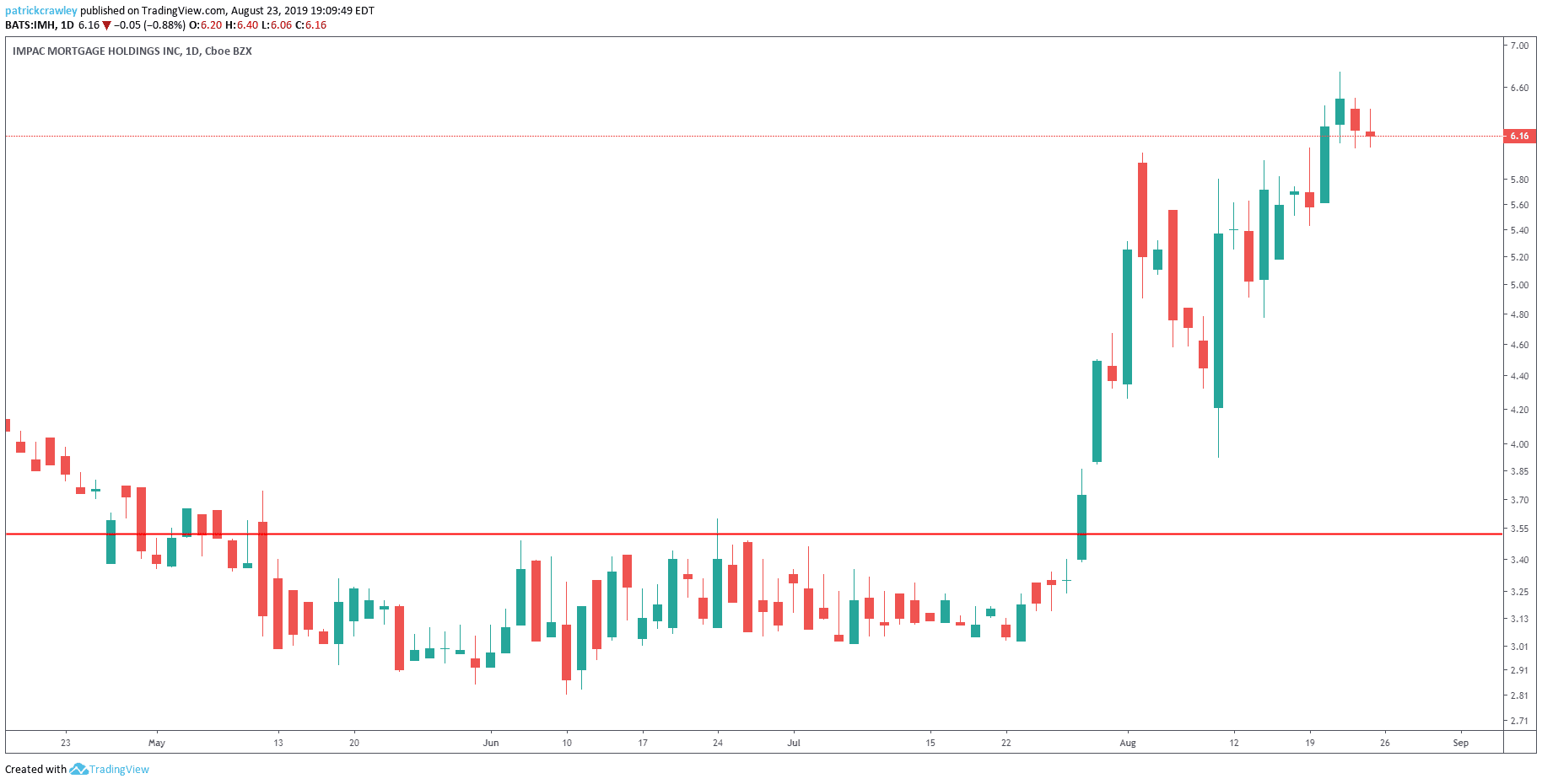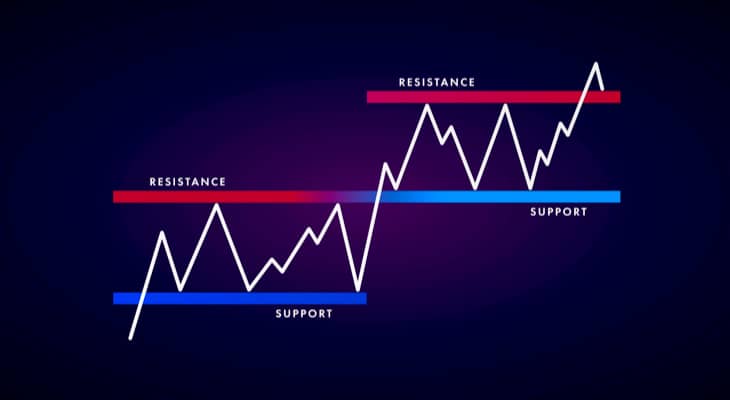Forex support and resistance: Levels where the price tends to stop and reverse direction.
In the volatile world of forex trading, understanding and utilizing support and resistance levels is crucial for making informed trading decisions. Forex support and resistance levels are key price points on a chart where the price tends to stall and reverse its direction. These levels are a product of market psychology and represent areas where buyers and sellers interact, creating significant price reactions. In this comprehensive guide, we will delve into the concept of support and resistance in forex trading, explore their significance, and equip you with the knowledge to incorporate them into your trading strategy effectively.
Table Content
1. What is Support and Resistance?
2. How to Identify Support and Resistance Levels?
3. Importance of Support and Resistance in Forex Trading
4. Trading Strategies with Support and Resistance
5. FAQs (Frequently Asked Questions)
6. Footnote
What is Support and Resistance?
Support and resistance are fundamental concepts in technical analysis, and they play a vital role in identifying potential turning points in the forex market.
Support refers to a price level where the demand for a particular currency pair is strong enough to prevent it from falling further. It acts as a floor for the price, causing it to bounce back higher after reaching that level.
Resistance, on the other hand, is a price level where the supply of the currency pair is abundant enough to prevent it from rising further. It acts as a ceiling for the price, causing it to retreat lower after reaching that level.
These levels are dynamic and can change over time as market conditions evolve.

How to Identify Support and Resistance Levels?
Identifying support and resistance levels is a crucial skill for any forex trader. Several methods can help you pinpoint these critical levels:
1. Chart Analysis
The most common approach is to use historical price data to identify areas where the price has historically stalled or reversed. You can manually draw horizontal lines on your chart to connect multiple swing highs (resistance) or swing lows (support).
2. Technical Indicators
Various technical indicators, such as moving averages, Bollinger Bands, and Fibonacci retracement levels, can also help identify support and resistance areas.
3. Psychological Levels
Round numbers and significant price levels, such as 1.1000 or 1.5000, often act as strong psychological support or resistance points.
4. Volume Profile Analysis
Volume profile analysis helps identify price levels with the highest trading activity, indicating potential support or resistance zones.
Importance of Support and Resistance in Forex Trading
Understanding the significance of support and resistance levels can immensely benefit forex traders:
1. Entry and Exit Points
Support and resistance levels provide clear entry and exit points for trades. Traders can enter long positions near support levels and short positions near resistance levels.
2. Risk Management
These levels aid in setting appropriate stop-loss and take-profit orders, thereby enhancing risk management.
3. Confirmation of Trends
Breakouts above resistance or below support can confirm potential trend reversals or continuations.
4. Market Sentiment Analysis
Support and resistance levels offer valuable insights into market sentiment and the balance of power between buyers and sellers.
Trading Strategies with Support and Resistance
Various trading strategies revolve around support and resistance levels:
1. Bounce Trading
Traders identify strong support or resistance levels and wait for the price to bounce off these levels before entering a trade in the opposite direction.

2. Breakout Trading
Traders observe breakouts above resistance or below support levels as potential entry points for trades in the direction of the breakout.

Sources from Tradingview
3. Range Trading
In a range-bound market, traders buy near support and sell near resistance, profiting from price oscillations within the established range.

4. Trend Continuation
Support and resistance levels can also help identify areas to add to positions in a trending market.

FAQs (Frequently Asked Questions)
Q: Can support levels become resistance, and vice versa?
A: Yes, when a support level is broken, it can act as resistance on subsequent rallies, and vice versa.
Q: How can I confirm the strength of a support or resistance level?
A: The more times a price level has acted as support or resistance in the past, the stronger it is considered.
Q: Are support and resistance levels the same across all timeframes?
A: Support and resistance levels can vary across different timeframes. Longer timeframes tend to have stronger levels.
Q: Is it necessary to use multiple indicators to identify support and resistance?
A: While indicators can help, many traders rely on simple chart analysis and price action to identify these levels effectively.
Q: Do support and resistance levels work in all market conditions?
A: Support and resistance levels can be less effective during periods of high market volatility or major economic events.
Q: Can I use support and resistance levels in conjunction with other technical indicators?
A: Absolutely! Combining support and resistance analysis with other indicators can strengthen your trading decisions.
Footnote
In Summary, forex support and resistance levels are critical tools that every forex trader should master. By understanding these key price levels, you can make more informed trading decisions, improve risk management, and enhance your overall trading strategy. Remember that support and resistance are not fixed, and they require regular reassessment as market dynamics change. By integrating these concepts into your trading arsenal, you can gain a competitive edge and navigate the dynamic forex market with greater confidence.











Discussion